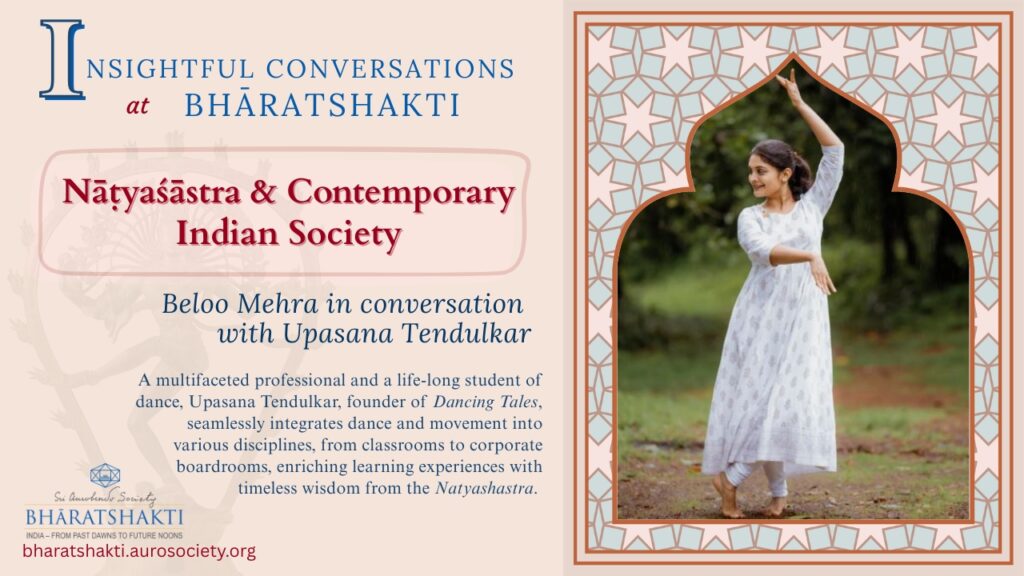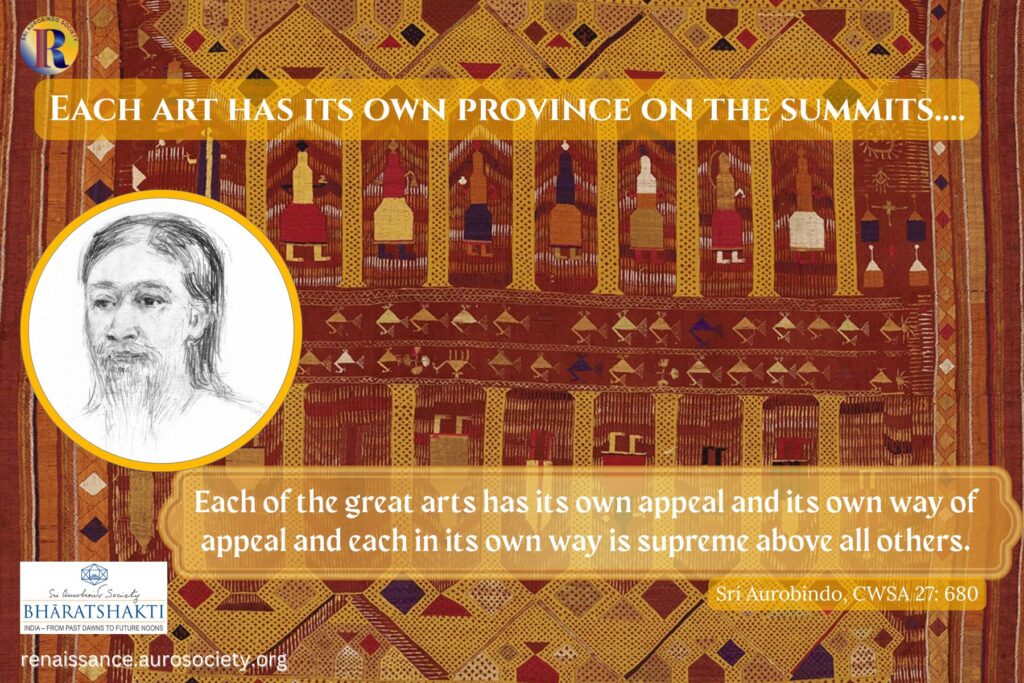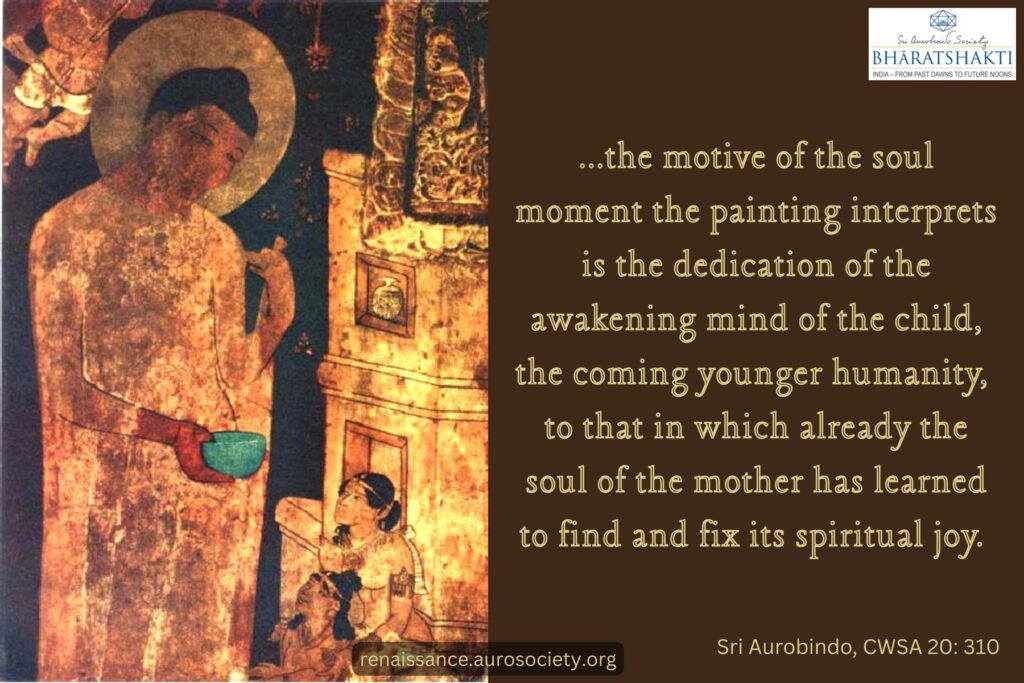Volume V, Issue 9
Author: Sri Aurobindo
Editor’s Note: It was most likely in 1892 that Sri Aurobindo wrote the play titled The Harmony of Virtue. That was his second and last year at Cambridge. Referring to this writing, he said later in life that at the age of 18 or 19, he had started writing under the impression of Plato’s philosophy where he was trying to explain the cosmos on the foundation of the principle of Beauty and Harmony. He added that he never got beyond the first three or four chapters, which we find today in Volume 1 of his Complete Works (pp. 11-77).
The principal character in this play, “Keshav Ganesh Desai” is named after Keshav Ganesh Deshpande, one of Sri Aurobindo’s friends at Cambridge and subsequently in India.
We feature a few passages from this play here. Sri Aurobindo here speaks of the Beauty in Nature which is based on the principle of Harmony. We also get some interesting insights into what is beauty, and whether there is an absolute standard of beauty.

Keshav—…let us set out on the discovery of some law, or should I not rather say, some indicating tendency by which we may arrive at a principle of life?
Wilson—I am anxious to hear it. […]
Keshav—My first difficulty when I set out on a voyage of discovery is to select the most probable route. I look at my chart and I see one marked justice along which the trade winds blow; but whoever has weighed anchor on this path has arrived like Columbus at another than the intended destination, without making half so valuable a discovery.
Another route is called “beauty” and along this no-one has yet sailed…. Now which shall we choose? for much hangs on our selection. Shall we say justice?
Wilson—Let me know first what justice is.
Keshav—I do not know, but I think no-one would hesitate to describe it as forbearance from interfering with the rights of others.
Wilson—That is a good description.
Keshav—Possibly, but so long as we do not know what are the rights of others, the description, however good, can have no meaning.
Wilson—Can we not discover, what are the rights of others?
Keshav—We have been trying for the last three-thousand years; with how much or how little success, I do not like to say.
Wilson—Then let us try another tack.
Keshav—Can you tell me which one we should choose? My own idea is that the word “beauty“ is replete with hopeful possibilities.
Wilson—Is not that because it is used in a hundred different senses?
Keshav—I own that the word, as used today, is like so many others a relative term. But if we were to fix a permanent and absolute meaning on it, should we not say that beauty is that which fills us with a sense of satisfying pleasure and perfect fitness?
Wilson—Yes, I think beauty must certainly be judged by its effects.
Keshav—But are there not minds so moulded that they are dead to all beauty and find more charm in the showy and vulgar than in what is genuinely perfect and symmetrical?
Wilson—There can be no doubt of that.
Keshav—Then beauty still remains a relative term?
Wilson—Yes.
Keshav—That is unfortunate. Let us try and find some other test for it. And in order to arrive at this, should we not take something recognized by all to be beautiful and examine in what its beauty lies?
Wilson—That is distinctly our best course. Let us take the commonest type of beauty, a rose.
Keshav—Then in what lies the beauty of a rose if not in its symmetry?
Why has the whole effect that satisfying completeness which subjugates the senses, if not because Nature has blended in harmonious proportion the three elements of beauty; colour, perfume, and form?
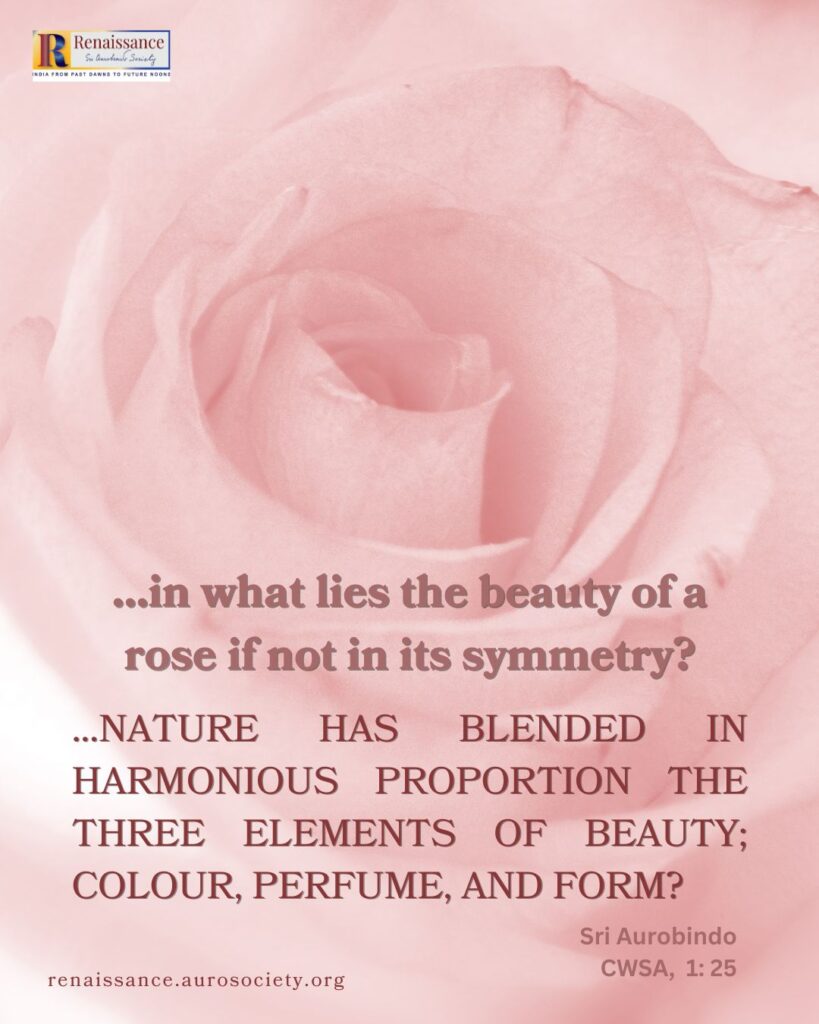
Now beauty may exist separately in any two of these elements and where it does so, the accession of the third would probably mar the perfection of that species of beauty; as in sculpture where form in its separate existence finds a complete expression and is blended harmoniously with perfume—for character or emotion is the perfume of the human form; just as sound is the perfume of poetry and music—but if a sculptor tints his statue, the effect displeases us, because it seems gaudy or tinsel, or in plain words disproportionate.
In some cases beauty seems to have only one of these elements, for example frankincense and music which seem to possess perfume only, but in reality we shall find that they have each one or both of the other elements. For incense would not be half so beautiful, if we did not see the curling folds of smoke floating like loose drapery in the air, nor would music be music if not harmoniously blended with form and colour, or as we usually call them, technique and meaning.
Again there are other cases in which beauty undoubtedly has one only of the three elements: and such are certain scents like myrrh, eucalyptus and others, which possess neither colour nor form, isolated hues such as the green and purple and violet painted on floor and walls by the afternoon sun and architectural designs which have no beauty but the isolated beauty of form.
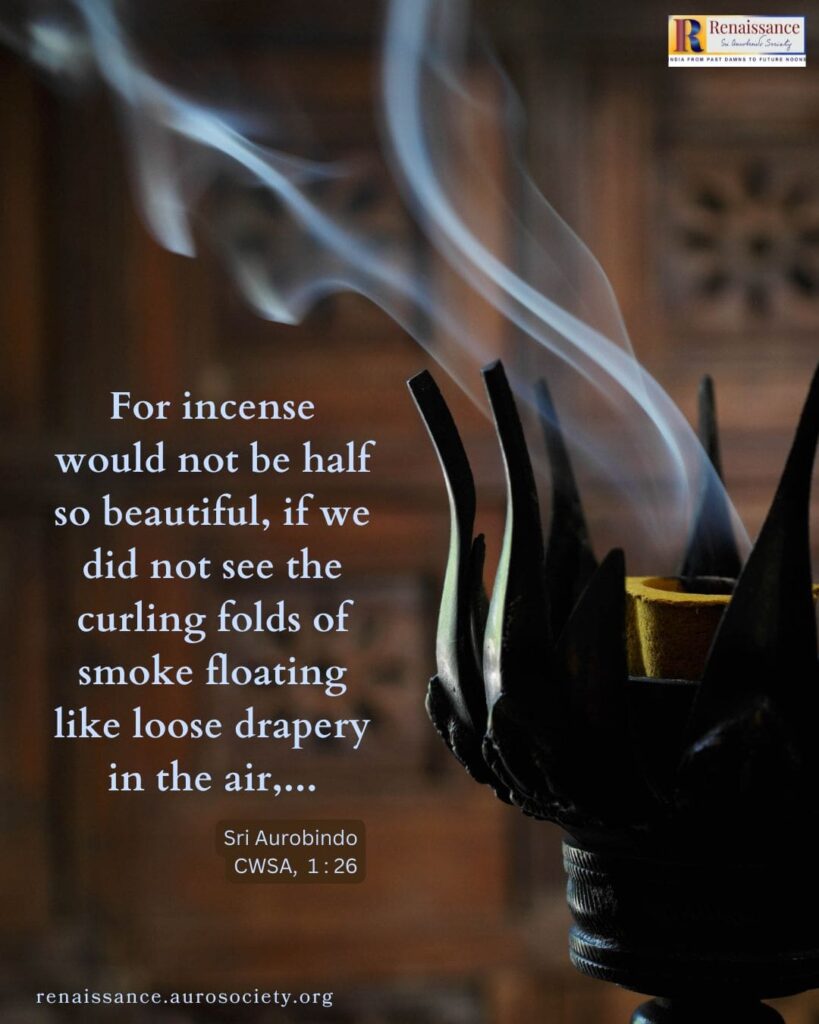
READ:
The Uses of Art – A 1905 lecture
The criticism of ages has shown a fit appreciation of these harmonies by adjudging the highest scale of beauty to those forms which blend the three elements and the lowest to those which boast only of one. Thus sculpture is a far nobler art than architecture, for while both may compass an equal perfection of form, sculpture alone possesses the larger harmony derived by the union of form and perfume.
Similarly the human form is more divine than sculpture because it has the third element, colour; and the painting of figures is more beautiful than the portrayal of landscapes, because the latter is destitute of perfume, while figures of life have always that character or emotion which we have called the perfume of the living form.
Again if we take two forms of beauty otherwise exactly on the same level, we shall find that the more beautiful in which the three elements are more harmoniously blended. As for instance a perfect human form and a perfect poem; whichever we may admire, we shall find our reason, if we probe for it, to be that the whole is more perfectly blended and the result a more satisfying completeness.
If we think of all this, it will assuredly not be too rash to describe beauty by calling the general effect harmony and the ulterior cause proportion. What is your opinion, Broome?
Wilson—Your idea is certainly remarkable and novel, but the language you have selected is so intricate that I am in the dark as to whether it admits of invariable application.
Keshav—The usual effect of endeavouring to be too explicit is to mystify the hearer. I will try to dive into less abysmal depths. Can you tell me, why a curve is considered more beautiful than a straight line?
Wilson—No, except that the effect is more pleasing.
Keshav—Ah yes, but why should it be more pleasing?
Wilson—I cannot tell.
Keshav—I will tell you. It is because a curve possesses that variety which is the soul of proportion. It rises, swells and falls with an exact propriety—it is at once various and regular as rolling water; while the stiff monotony of a straight line disgusts the soul by its meaningless rigidity and want of proportion.
On the other hand a system of similar curves, unless very delicately managed, cannot possibly suggest the idea of beauty: and that is because there is no proportion, for proportion, I would impress on you, consists in a regular variety. And thus a straight line, tho’ in itself ugly, can be very beautiful if properly combined with curves. Here again the like principle applies.
Do you now understand?
Wilson—Yes, I admit that your theory is wonderfully complete and consistent.
Keshav—If you want a farther illustration, I will give you one. And just as before we selected the most commonly received type of beauty, I will now select the most perfect: and that, I think, is a perfect poem. Would you not agree with me?
Wilson—No, I should give the palm to a perfectly beautiful face.
Keshav—I think you are wrong.
Wilson—Have you any reason for thinking so?

A mask in the form of a human face
by Leonardo da Vinci; source: wikicommons
Keshav—Yes, and to me a very satisfying reason. The three elements of beauty do not blend with absolutely perfect harmony in a human face. Have you not frequently noticed that those faces which express the most soul, the most genius, the most character, are not perfectly harmonious in their form?
Wilson—Yes, the exceptions are rare.
Keshav—And the reason is that to emphasize the character, the divine artist has found himself compelled to emphasize certain of the features above the others, for instance, the lips, the eyes, the forehead, the chin, and to give them an undue prominence which destroys that proportion without which there can be no perfect harmony. Do you perceive my meaning?
Wilson—Yes, and I do not think your conclusions can be disputed.
Keshav—In a perfectly beautiful face the emotion has to be modified and discouraged, so as not to disturb the harmony of form: but in a perfectly beautiful poem the maker has indeed to blend with exquisite nicety the three elements of beauty, but though the colour may be gorgeous, the emotion piercingly vivid, the form deliriously lovely, yet each of these has so just a share of the effect, that we should find it difficult to add to or to detract from any one of them without fatally injuring the perfection of the whole.
And so it is with every form of beauty that is not originally imperfect; to detract or add would be alike fatal; for alteration means abolition. Each syllable is a key-stone and being removed, the whole imposing structure crumbles in a moment to the ground.
Can we better describe this perfect blending of parts than by the word proportion? or is its entire effect anything but harmony?
Wilson—There are indeed no better words.
Keshav—And this harmony runs through the warp and woof of Nature.
Look at the stars, the brain of heaven, as Meredith calls them. How they march tossing on high their golden censers to perfume night with the frankincense of beauty! They are a host of winged insects crawling on the blue papyrus of heaven, a swarm of golden gnats, a cloud of burning dust, a wonderful effect of sparkling atoms caught and perpetuated by the instantaneous pencil of Nature. And yet they are none of all these, but a vast and interdependent economy of worlds.
Those burning globes as they roll in silent orbits through the infinite inane, are separated by an eternity of space. They are individual and alone, but from each to each thrill influences unfathomed and unconscious, marvellous magnetisms, curious repulsions that check like adverse gales or propel like wind in bellying canvas, and bind these solitary splendours into one supernal harmony of worlds. The solar harmony we know. How gloriously perfect it is, how united in isolation, how individual in unity! How star answers to star and the seven wandering dynasts of destiny as they roll millions of leagues apart, drag with them the invisible magnetic cord which binds them for ever to the sun.
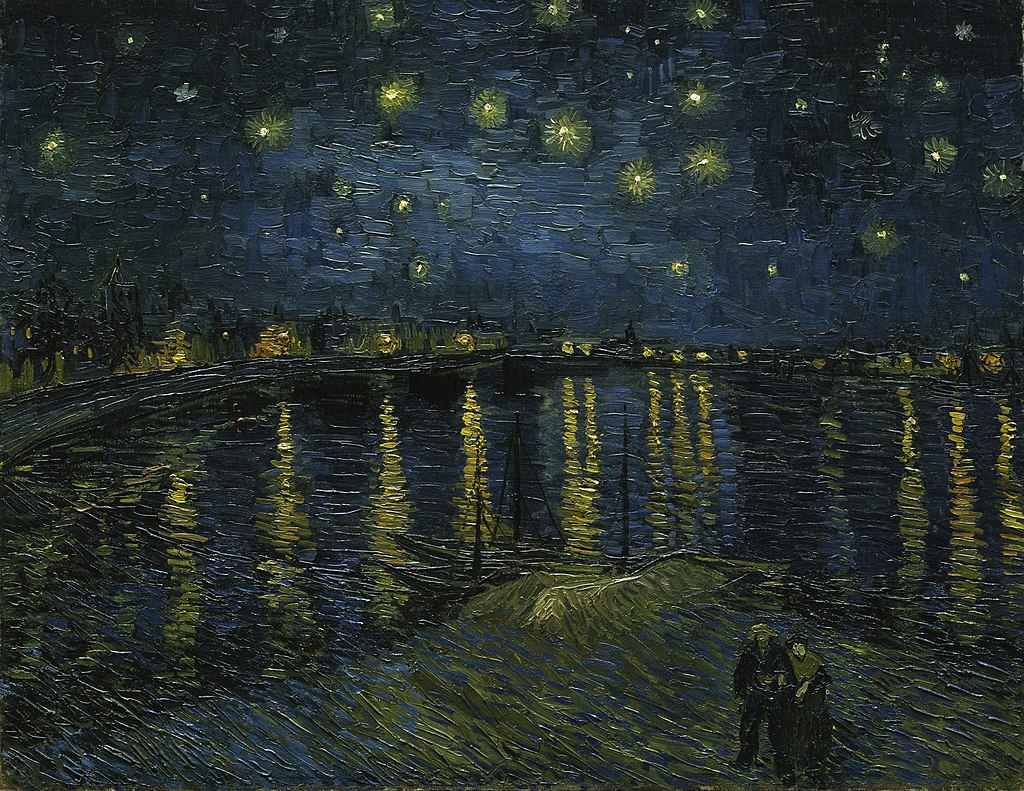
Also read:
The Realisation of Beauty
We believe that those lights we call fixed are each a sun with a rhythmic harmony of planets dancing in immeasurable gyrations around one immovable, immortal star. More, is it extravagant to guess that what to us is fixed, is a planet to God? Perhaps to the inhabitants of the moon this tumbling earth of ours is a fixed and constant light, and perhaps the glorious ball of fire we worship as the Lord of Light, is the satrap of some majesty more luminous and more large. Thus we may conceive of the universe as a series of subordinate harmonies, each perfect in itself and helping to consummate the harmony which is one and universal.
Well may the poet give the stars that majestic synonym – “The army of unalterable law.”*
But the law that governs the perishable flower, the ephemeral moth, is not more changeful than the law that disciplines the movements of the eternal fires. The rose burns in her season; the moth lives in his hour: not even the wind bloweth where it listeth unless it preserve the boundaries prescribed by Nature. Each is a separate syllable in the grand poem of the universe: and it is all so inalterable because it is so perfect. Yes, Tennyson was right, tho’ like most poets, he knew not what he said, when he wrote those lines on the flower in the crannies: if we know what the flower is, we know also what God is and what man.
* George Meredith, Lucifer in Starlight
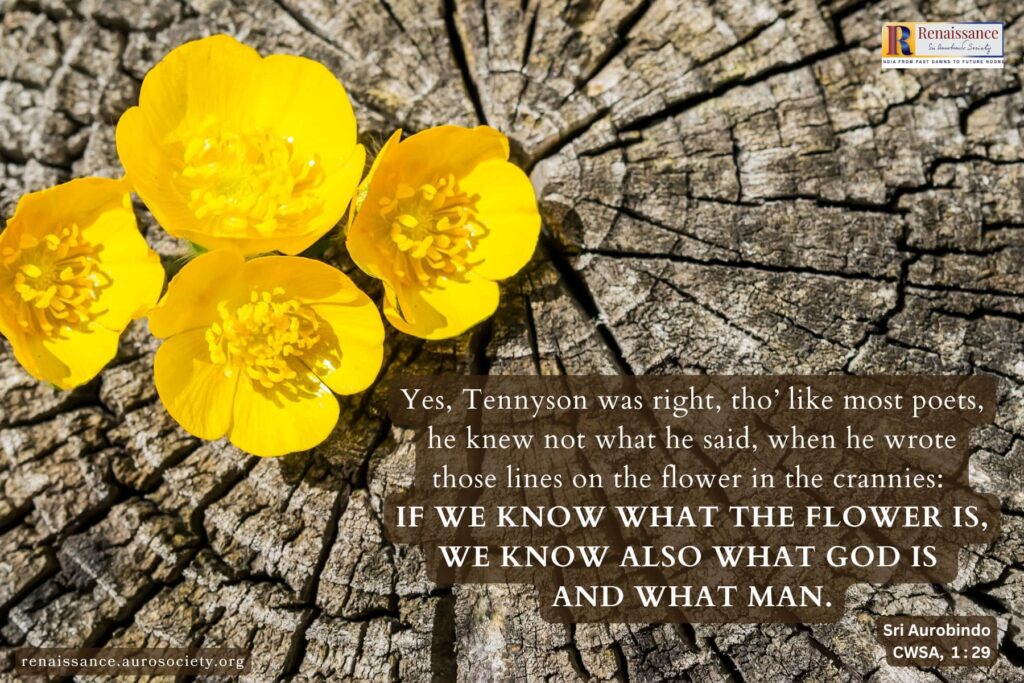

~ Design: Beloo Mehra

